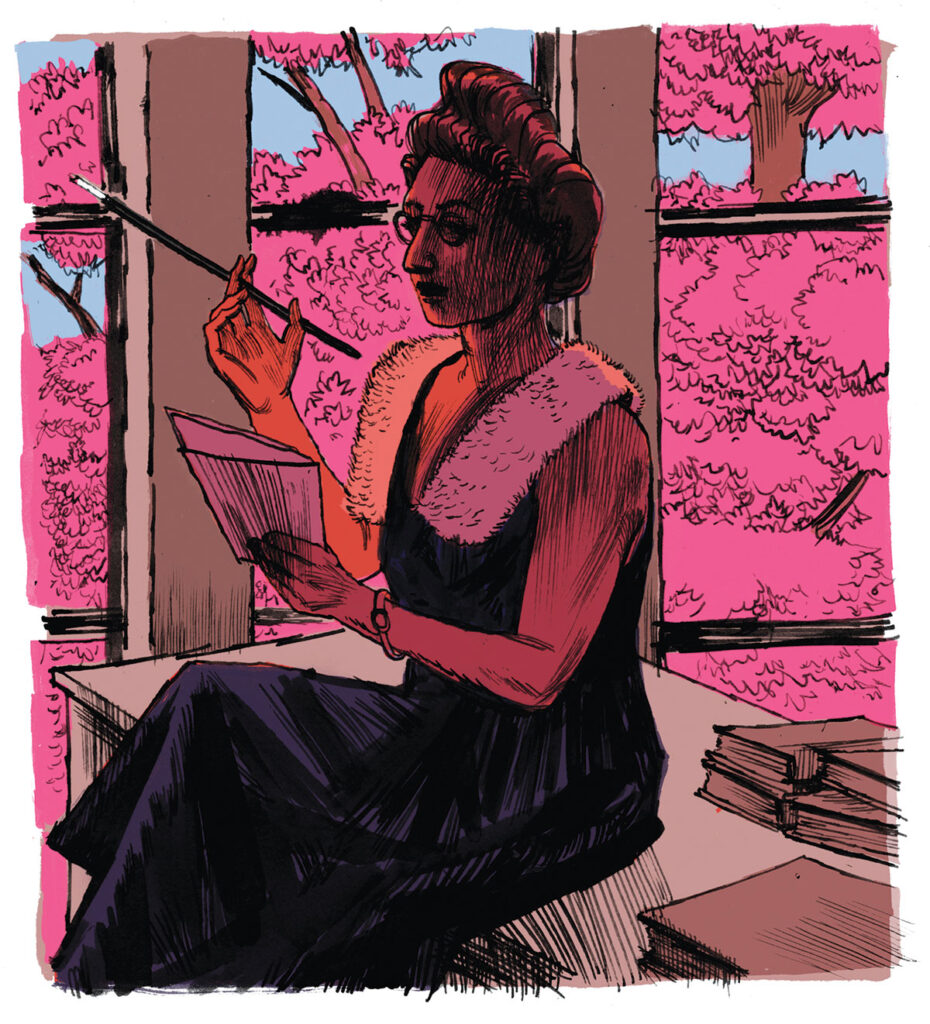Martha Foley’s Granddaughters
What the esteemed literary editor never knew about the life of her troubled son, David Burnett

On an early spring afternoon in 1965, a month or so before my 27th birthday, I was browsing in a bookstore on Manhattan’s Upper West Side when I picked up a copy of The Best American Short Stories 1964. Leafing through it, I thought of how dearly I’d love to have one of my stories chosen for this annual anthology, which had been edited by Martha Foley for more than two decades. My literary career was, at that moment, all but nonexistent—I’d written eight unpublished books and accumulated nearly 3,000 rejections—and I recall telling myself that if I didn’t have a book published by the time I was 30, I’d have to consider giving up the idea of being a novelist.
That evening, Joe McCrindle, editor of the Transatlantic Review, called to ask whether I’d heard that “The Application,” a story of mine that had appeared in the Autumn 1964 issue of that publication—after being rejected by 33 magazines in a four-year period—had been selected by Martha Foley for The Best American Short Stories 1965. Soon after, Joyce Hartman, an editor at Houghton Mifflin (publisher of the anthology), wrote to say that she had read “The Application” in galleys and was wondering whether I had a book in the works. I said that I was indeed writing a new novel, Big Man. Houghton Mifflin accepted the manuscript and brought it out the subsequent spring. What followed was a series of publications: a second novel, Listen Ruben Fontanez, in 1968; my first collection of short stories, Corky’s Brother, in 1969; and Parentheses: An Autobiographical Journey, in 1970. These publications led to teaching positions at Stanford University and the State University of New York’s College at Old Westbury, and in 1971, I was offered a tenure-track position at the University of Massachusetts in Amherst, where I would remain for the next 30 years as professor and writer-in-residence. This sustained period of good fortune was possible only because of Martha Foley.
Martha moved to Northampton, Massachusetts, in the fall of 1973, two years after her only son, David Burnett, died of a drug overdose. Around that time, Joyce Hartman called to tell me that Martha, depressed over David’s death, was not doing well. Her grief was intensified by the fact that she had never gotten over the loss of her husband, Whit Burnett, with whom she had founded and edited STORY magazine—Whit had left Martha to marry Hallie Southgate, a young woman who had been a runner-up in a STORY short fiction contest. At the time of the separation, David was 10 years old.
Martha was living about 10 miles away from me, and the two of us soon became friends. On some afternoons, I’d take along one or more of my three children to her two-room furnished apartment. She loved talking with them, teasing them, serving them Russell Stover chocolates and Sara Lee pound cake, which they called “Martha Foley cake.” When my parents visited, Martha came over for dinner. She’d spend hours telling them about her childhood (“In Boston, one never went to bed. Oh, no! One retired for the night!”), about her career in the newspaper business, about her fight for women’s rights in the 1920s and ’30s, and about her years in Paris, Haiti, Vienna, Majorca, and Los Angeles. She was full of marvelous tales about Ernest Hemingway, James Joyce, Greta Garbo, Charlie Chaplin, William Shirer, Dorothy Thompson, William Saroyan, Ray Bradbury, and others. She said that many of those tales, which she also related to the graduate students in one of my fiction-writing workshops, would be included in a memoir she was working on. When I told her how thrilled my parents and graduate students were to hear these stories, and how delighted I was that they would be in print one day, she laughed. “I suppose,” she said, “you could say that I’m in my anec-dotage.”
In the last years of Martha’s life, she continued editing Best American Short Stories, working on her memoir, corresponding with friends, and grieving for her son. When she talked about David, she did so glowingly, never alluding to his addiction or the overdose that killed him—or that she had, for many years, been supporting him financially. According to her, David had been killed by incompetent doctors during an operation for ulcers. She knew the truth, of course. But what she didn’t know about her son was that he had fathered two daughters, and these half sisters—her granddaughters Nina and Marcia—would not know of the other’s existence until 48 years after David’s death.
Login to view the full article
Need to register?
Already a subscriber through The American Scholar?
Are you a Phi Beta Kappa sustaining member?
Register here
Want to subscribe?
Print subscribers get access to our entire website Subscribe here
You can also just subscribe to our website for $9.99. Subscribe here


